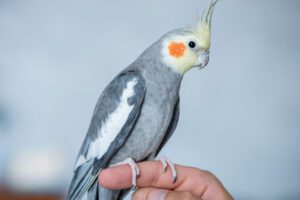Should I Have My Bird’s Wings Trimmed?
Birds are wonderful and affectionate companions, and they require plenty of care to stay healthy. One aspect of avian care that often raises questions is wing trimming. Here at Paws and Claws Animal Medical Center in Dunedin, FL, we understand your concerns. In this article, we’ll explain the significance of trimming your bird’s wings, when to do it, how to do it safely, and what to do if you’re unsure about trimming the wings yourself. Your feathered friend’s welfare is our priority, and we’re here to provide you with the information you need.

The Importance of Trimming Your Bird’s Wings
Trimming a bird’s wings is a key aspect of responsible bird ownership. When done correctly, wing trimming offers several benefits:
Safety
Birds that can fly unrestricted may accidentally injure themselves by crashing into walls or windows. Trimming their wings reduces the risk of such accidents.
Training
Wing trimming can assist in behavioral training. It helps establish boundaries and encourages your bird to stay close to you.
Preventing Escape
Birds are natural explorers, and if they escape outside, they face numerous dangers. Trimming their wings prevents them from flying away and getting lost.
Reducing Stress
A trimmed bird is often less stressed because it doesn’t constantly seek opportunities to fly. This can lead to a happier and healthier bird.
When Should You Trim Your Bird’s Wings?
Knowing when it’s time to trim your bird’s wings is essential. Signs that it may be time for a trim include:
Flight Mishaps
If your bird has recently had accidents while flying indoors, it’s a clear sign that their wings need attention.
Excessive Flying
Some birds become overly active and restless, which can be an indication that they need their wings trimmed to calm them down.
Maintenance
For most birds, wing trimming is required every 3-6 months. Regular maintenance helps prevent accidents and behavioral issues.
How to Trim Your Bird’s Wings Safely
Trimming your bird’s wings is a delicate procedure that requires precision and care to avoid harming your feathered friend. While it’s always recommended to seek professional assistance, here are more detailed tips for safely trimming your bird’s wings at home:
Gather the Right Tools
Before you start, ensure you have all the necessary tools ready. You’ll need sharp, clean scissors designed specifically for bird wing trimming. Dull or dirty scissors can cause splintered feather edges, which may be painful for your bird.
Understand the Wing Structure
Familiarize yourself with your bird’s wing anatomy. The primary flight feathers are the longest ones at the tips of the wings, and these are the ones you’ll be trimming. These feathers are typically numbered from the outermost (P10) to the innermost (P1).
Restrain Your Bird
To prevent any sudden movements during the procedure, gently restrain your bird. You can use a towel to wrap your bird, leaving its wings exposed. Ensure that the towel is not too tight, allowing your bird to breathe comfortably.
Feather Selection
When selecting feathers to trim, focus on the primary flight feathers, which are the first 5-10 feathers at the tip of each wing. Be cautious not to cut into the secondary feathers, as this can interfere with your bird’s balance.
Trim Gradually
Start by trimming just a few feathers at a time. It’s better to be conservative initially and make further trims if needed. Cutting too many feathers at once can cause imbalance and stress for your bird.
Angle Matters
Pay attention to the angle at which you cut the feathers. Aim to create a slight downward curve when trimming, which helps maintain balance and control for your bird during flight.
Check for Bleeding
As you trim, be watchful for any bleeding. If you accidentally cut into a blood feather (a feather with a blood supply), it may bleed profusely. In such cases, use styptic powder or cornstarch to stop the bleeding and seek immediate veterinary assistance if necessary.
Monitor Behavior
After trimming, observe your bird’s behavior. It’s normal for them to be a bit unsteady at first, but they should quickly adapt. If your bird appears distressed or continues to have difficulty flying, consult a veterinarian.
Professional Help
If you’re unsure about any aspect of wing trimming or are uncomfortable performing the procedure yourself, don’t hesitate to consult with our team at Paws and Claws. We have the experience and expertise to ensure your bird’s wings are trimmed safely and effectively.
Reach Out to Us for All Your Bird Care Needs
Owning a pet bird comes with the responsibility of ensuring their safety and happiness. Wing trimming is a vital aspect of this responsibility, offering numerous benefits to both you and your feathered friend. Remember to monitor your bird for signs that it’s time for a trim, and always prioritize their safety. If you’re unsure about wing trimming, reach out to us at Paws and Claws Animal Medical Center for help! Your bird’s welfare is our foremost concern. Call us today at (727) 953-6588 to schedule an appointment or for more information on avian care.
